CES 2016: The Best Of The Best
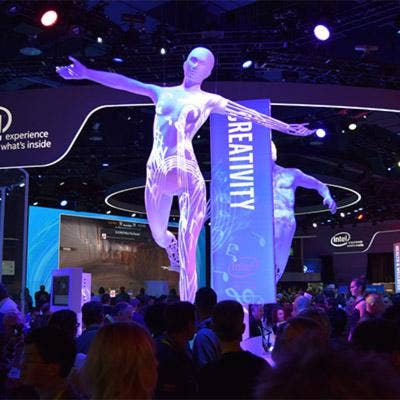
CES 2016: The Most Amazing Gadgets
After we've explored miles of consumer electronics -- from the breathtaking to the cool to the downright weird -- CES 2016 is over. The nonstop parade that serves as the tech industry's annual Mardi Gras for consumer gadgets did not disappoint.
Sure, there were the gaudy vender booths and remarkably creative yet useless app-enabled kitchen gadgets. There were some clear winners, and some not-so-spectacular entries. But there was no breakout product this year that stole the show. However, there were some very impressive products that deserve to be singled out. Here we present the best of the best products from the annual electronics runway extravaganza.
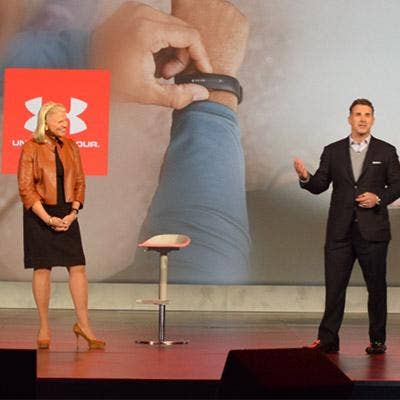
Fitness Trackers Go The Extra Mile With IBM
Fitness gear was everywhere at CES including a new offering from Under Armour's UA HealthKit system that includes a wristband, a heart rate monitor and a scale. Hardware connects personal data to the company's existing UA Record system.
As part of a deal with IBM, Under Armour said it will take billions of health tracking data points from the millions of UA users. Next it will start making sense of the fitness and health tracking data beyond answering the question, "Did I burn enough calories to earn that chocolate chip muffin?"
Under Armour's partnership with IBM includes the creation of Cognitive Coaching. Under Armour aggregates data from millions of users along with a user's historical health tracker data. Next, IBM would analyze the data and give users feedback to help users better understand how behavior can impact health. IBM said it will work with Under Armour to use aggregate data to create individualized Cognitive Coaches that can warn users when poor eating and exercising habits can lead to poor health among those that are demographically similar to you.
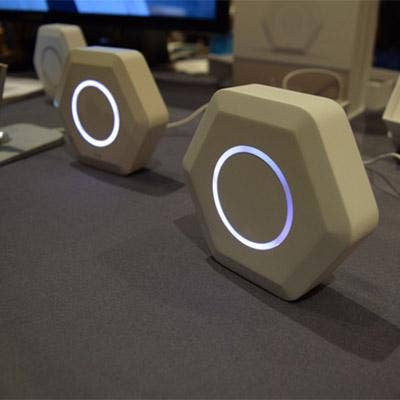
Luma's Advanced Router: Be The Master Of Your Own Domain And Domicile
As homes get smarter, so grows the need to better manage those networks. That's why a company called Luma is giving consumers some serious network management firepower. Luma is a Wi-Fi router system with a unique app to manage a home's security, parental controls and online access.
The Luma system consists of three hexagon-shaped routers that allow users to control and customize which devices and users can access the network via an iOS or Android app. Luma takes it a step further and lets users monitor device usage so they can see what each user is up to in real time. With the app, users can selectively pause Internet access by device or create rules governing what time a device can access the Internet.
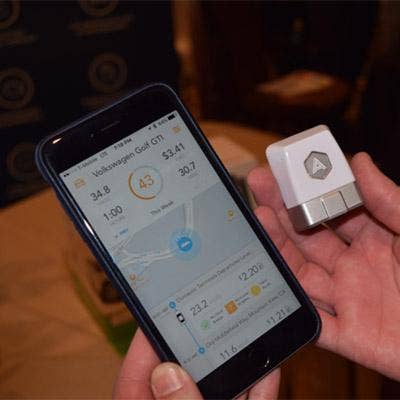
Automatic Turns Your Car Into An App Platform For $100
Automatic makes a $100 car accessory called Automatic Link that plugs into just about any car's standard diagnostics (OBD-II) port. The Bluetooth-enabled dongle beams static vehicle data to a smartphone app. It collects information such as mileage and trip data, and helps decode dashboard-based diagnostic codes.
At CES, Automatic touted a major update to its hardware. First off, it has added support for streaming Bluetooth, giving Automatic Link real-time capabilities that significantly enhance the platform's usability.
With the ability to stream car data straight from the OBD-II to a phone in real time, Automatic said it has swung the doors wide open to offer a wide variety of new services. Automatic now allows users to track in real time things such as fuel efficiency based on driving style, where users parked their cars, crash response if Automatic detects a severe collision, and audible alerts if it detects problematic driving patterns.
The company is also talking up the fact that Automatic has evolved into an app platform that allows businesses and car enthusiasts to focus on specific aspects of a car. An Automatic Fleet app keeps tabs on multiple cars at a time. There is a FreshBooks mileage tracking app, a Nest app that warms the house when users get close, and an UnMooch app for getting a buddy to chip in his exact share for gas.
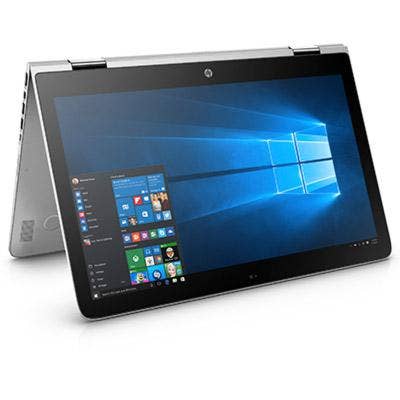
OLED Takes PCs By Storm At CES -- And They Look Gorgeous
HP Inc. released a Spectre x360 hybrid with an OLED display, just a day after Lenovo unveiled its first OLED hybrid, the ThinkPad X1 Yoga. And the next day, Dell announced its first 4-K OLED display on a 13-inch Alienware notebook, and Samsung followed suit with its Galaxy TabPro S laptop.
What's up with the sudden OLED love? We spoke to Dell, which told us that the OLED panels used by all PC manufacturers came from Samsung. Dell said that each of the PC manufacturers worked cooperatively to help Samsung bring down the cost of OLED panels, thanks to the scale anticipated by all four PC makers offering a 13-inch OLED option in their lineups.
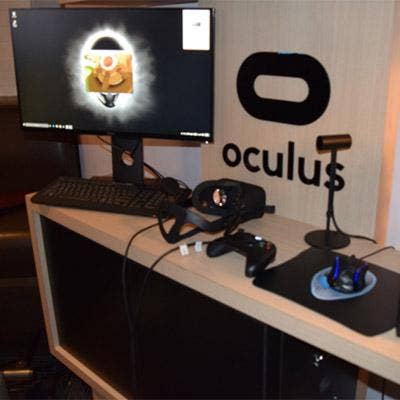
Virtual Reality Comes Down To Earth
The amount of hyperventilating over virtual reality headsets has been absurd in the tech world for years. Finally, at CES 2016, it came down to reality.
Oculus Rift announced pricing and availability of its headsets ($600) and HTC unveiled a big update to its VR kit called Vive Pre. HTC announced preorders for Vive start Feb. 29 with hardware shipping in April with pricing still an unknown.
At CES, we also learned how much a PC to run the virtual reality headsets would cost. With less than 1 percent of the world's computers powerful enough to run virtual reality, according to Nvidia, the question remains, how much will we have to fork over on top of the $600 (or so) for virtual reality headsets?
Dell announced at CES that it's working with Oculus Rift to cut the price of its $1,200 X51 Alienware midrange desktop PC to $1,000 when users buy it with the $600 Oculus Rift headset, bringing the grand total to $1,600.
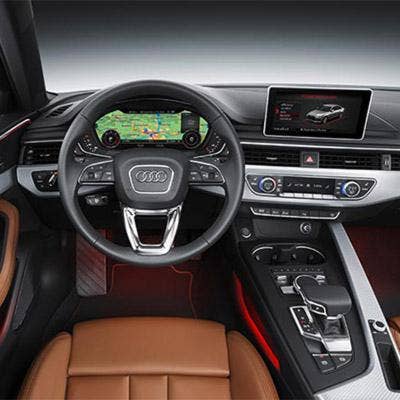
Qualcomm Powers The Car Of The Future
Qualcomm, best-known for its mobile Snapdragon processors, said it's doubling down on car tech with a partnership with Audi. Qualcomm revealed that its Snapdragon 602A chipset would be used in Audi's 2017 infotainment system. But why stop there?
Qualcomm also rolled out a Snapdragon 820 Automotive edition of its chips destined for MIBS2+, a second generation of its Modular Infotainment Platform. The platform will support LTE wireless connectivity and added horsepower to drive a car's entertainment, navigation and dashboard.
Demonstrations of the Snapdragon 820 and MIBS2+ included a customized dashboard for individual drivers at the same time the chip powered two HD displays -- one for navigation and a second for back-seat 4-K entertainment systems. The demonstration also include driver-assisted technology that keeps track of all cars on the road near you for what it called semi-autonomous driving technology.
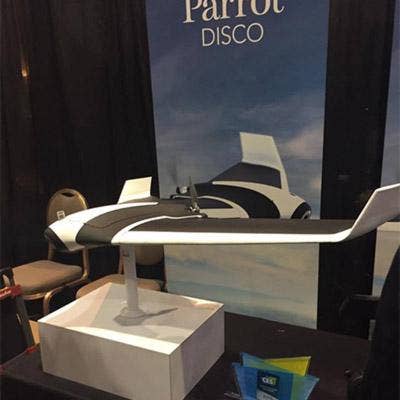
This Drone Does 50 MPH
Parrot's latest drone, the 1.5-pound Parrot Disco, is a fixed-wing drone with automatic takeoff and landing capabilities. This drone, which resembles an airplane, can fly up to 45 minutes and reach speeds of 50 mph. The Wi-Fi-enabled drone features a 1080p 14-megapixel camera, as well as a gyroscope and an accelerometer.
Parrot's latest UAV supports autopilot and other types of artificial intelligence for collision avoidance and the ability to fly "home" if it loses contact with the ground operator. The Parrot Disco drone is perfect for performing aeronautics acrobatics or for being your eyes in the sky following you to work.
Pricing and availability are still up in the air.
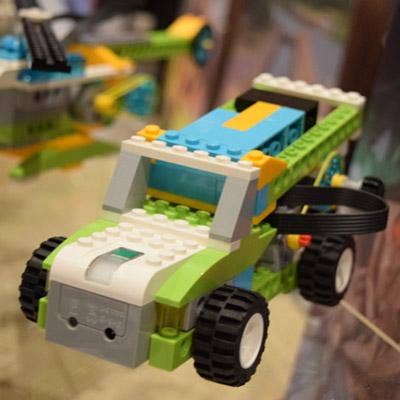
Getting Kids Hooked On Tech
CES is not for kids. But several kid-focused brands, including Lego and Fisher-Price, are ensuring that the techies of tomorrow will be ready for CES 2036.
Lego showcased its WeDo 2.0, an educational robotics kit that introduces elementary school kids to the world of programming. The updated WeDo platform allows primary school grade students to design their own Lego robotics creations in an effort to teach them the fundamentals of coding.
Fisher-Price also introduced its Code-A-Pillar $50 toy, which aims to get boys and girls interested in coding. This first-generation Code-A-Pillar from Fisher-Price is made up of eight segments, each with a different programmable attribute that controls how the caterpillar moves and acts.
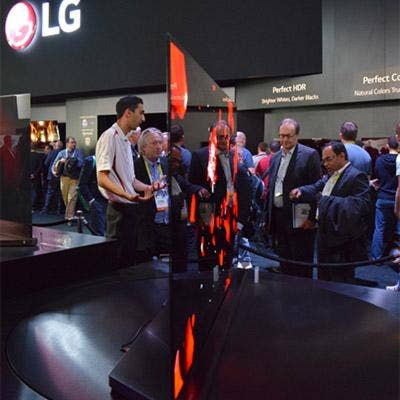
LG Signature Extremely Thin OLED TV
TV makers are always looking for that edge to take HDTVs to the next level. At CES, TCL and LG unveiled a partnership with Dolby to deliver Dolby Vision, the company's high dynamic range technology that can boost image quality. Called HDR, the technology can make images brighter and sharper than existing HDTVs, giving picture quality a greater contrast range and improved color depth.
LG showed off its Signature OLED G6 HDR-capable sets. The G6 TV is an extension of Samsung's brand-new Signature line, a brand that promotes high-end, connected products like a washer and a smart refrigerator.
At 2.57 mm thick, this television is about as thin as four stacked credit cards. The television comes with a 65-inch OLED panel or a 77-inch OLED panel on the front and sits on a speaker base that acts like a stand. LG wouldn't reveal pricing and availability of the TV. But, remember, if you have to ask how much it costs, you probably can't afford it.
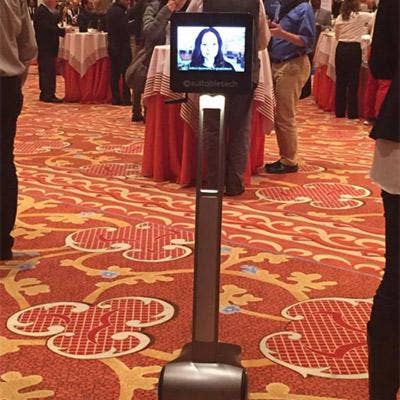
Suitable Technologies' BeamPro
The BeamPro, which Suitable Technologies displayed at CES, allows users to interact from remote locations by coupling high-end video and audio features with a moving machine on wheels.
This product, which contains two cameras and a six-microphone system, has a 17-inch LCD screen for teleconferencing capabilities, and lets users remotely talk to others -- whether for a conference or for a chat with family and friends.
Suitable Technologies showed off the Beam's functionality by inviting Edward Snowden to talk at CES remotely on the product. The BeamPro is available for lease with a down payment of $2,369, followed by $576 monthly.
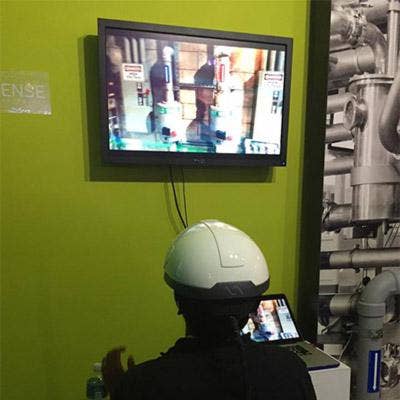
Daqri Augmented Reality Smart Helmet
During its keynote, Intel showed off the Daqri Smart Helmet, which begins shipping Tuesday from the Los Angeles-based manufacturer.
Powered by a Skylake Core m7 processor and Intel RealSense technology, coupled with industrial grade 360-degree sensor array and 4-D augmented reality displays, this smart helmet notifies workers in the industrial space of potential dangers.
Daqri's human-machine interface inserts real-time information, such as work instructions, safety information and mapping, to maximize productivity and safety for works in industrial settings. The Daqri smart helmet will be available in the first quarter of 2016.
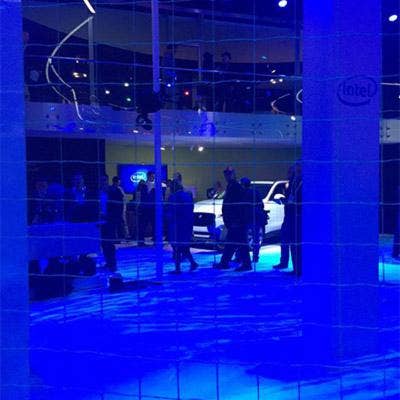
Yuneec Typhoon H Drone
Intel also demonstrated the Yuneec Typhoon H consumer drone, manufactured by Chinese company Yuneec Electric Aviation.
This drone, priced at $1,700, can react to obstacles in real time using Intel RealSense technology and an Intel CPU, so that it won't hit objects while flying in the air. The carbon-fiber Typhoon H comes equipped with a 360-degree gimbal camera that can take 4-K videos and 12-megapixel pictures.
It is also paired with an Android-based controller, allowing users to track their drones in real time through a built-in display on the machine. And, through a "Follow Me" mode, the drone can follow its connected subject. The drone will hit the market at a future unspecified date.
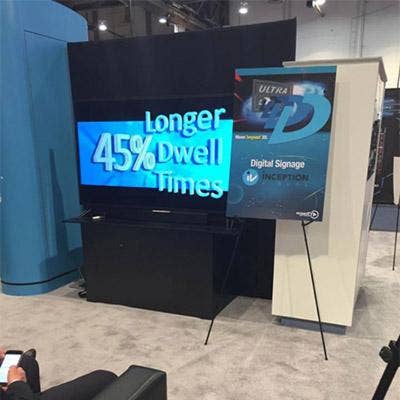
Stream TV Networks Ultra-D TV
Stream TV showed off its Ultra-D video wall at CES, an impressive 3-D TV that is in its production phase.
This 4-K TV contains technology that makes its images 3-D, so that users don't need glasses. Users can also control how much 3-D they would like the screen to show. This TV has a variety of uses from watching movies and show in 3-D to digital signage applications. It also has gaming uses and features a newly developed Unity Engine plug-in now available so developers can create immersive 3-D games with no glasses required.
The Ultra-D technology is being manufactured by Pegatron and is available for preorder from Izon-TV.
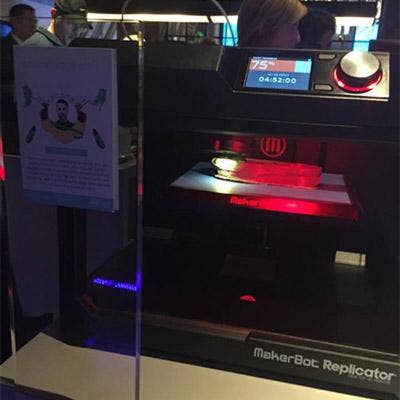
MakerBot's Smart Extruder+
MakerBot kicked off CES by announcing the Smart Extruder+ 3-D printer.
This 3-D printer aims to solve several issues users faced with older generations of MakerBot's Smart Extruder products, including frequent clogging. The Extruder+ aims to solve these problems with an enhanced thermal management system, which is designed to help speed print startup, and an extended PTFE tube (which feeds filament into the printer's nozzle). In addition, MakerBot has improved the extruder's smart sensors so that the overall 3-D printing process can be more streamlined.
The Smart Extruder+ will ship at the end of January and is expected to cost $199.
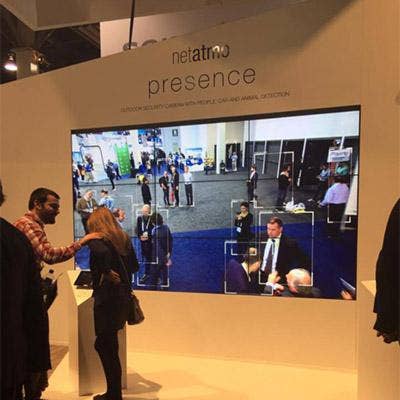
Natatmo Presence
Natatmo's smart surveillance camera, the Presence, which was showcased on the CES floor, can tell the difference between people and animals. This proves extremely useful as a surveillance tool because the camera will send out notifications to homeowners for intruding humans, as opposed to notifications for any sort of movement detected.
Presence uses technology called Smart-Sight, which is a learning system that distinguishes the objects passing by the home, and contains a 4-megapixel sensor with a 100-degree field of view. The camera, which also contains a light on top that can be set to automatically turn on if it detects something, connects to a smartphone, computer, tablet or Apple Watch through Wi-Fi. Presence also has the option to record what passes by the home through labels like "Person Seen" or "Animal Seen" along with the time. Presence will be available in the third quarter of 2016, though no price has been revealed for the product.
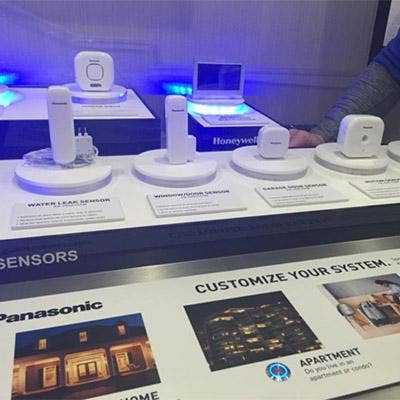
Panasonic Ora Smart Home System
Home automation was huge at CES this year, and Panasonic was no exception, showing off its smart-home integration system Ora.
Ora aims to bring together any device in the house, regardless of the device's manufacturer or operating system. The system will bring together lighting, heating, cameras, motion sensors and smart appliances that can all be operated and customized on a mobile device.
Panasonic has partnered with Xcell Energy to manage energy use in the home automation platform, as well as thermostat maker Honeywell to integrate certain devices into the system. Panasonic has yet to reveal the pricing and availability of its Ora software platform.
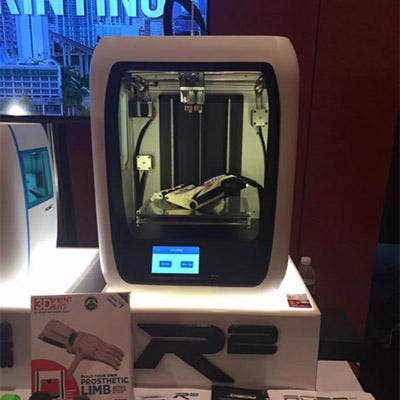
Robo R2 And R2 Mini
Robo hopes to bring 3-D printing to the average consumer with its new R2 and R2 Mini.
These 3-D printers, which Robo previewed at CES, can print a range of materials and allow users to experiment with different filament materials. Both printers also contain a touch screen to manage printing tasks straight on the devices.
The R2 is 10.5 inches cubed and will cost between $1,500 and $1,800, while the 4.5-inch-cubed R2 Mini, which starts at $499, is a tinier, more versatile version of Robo's larger R2 model, and prints more simple objects. The R2 has additional features including a second extruder, meaning that it can print in multiple colors at once. The R2 and R2 Mini will be available for purchase in the spring.